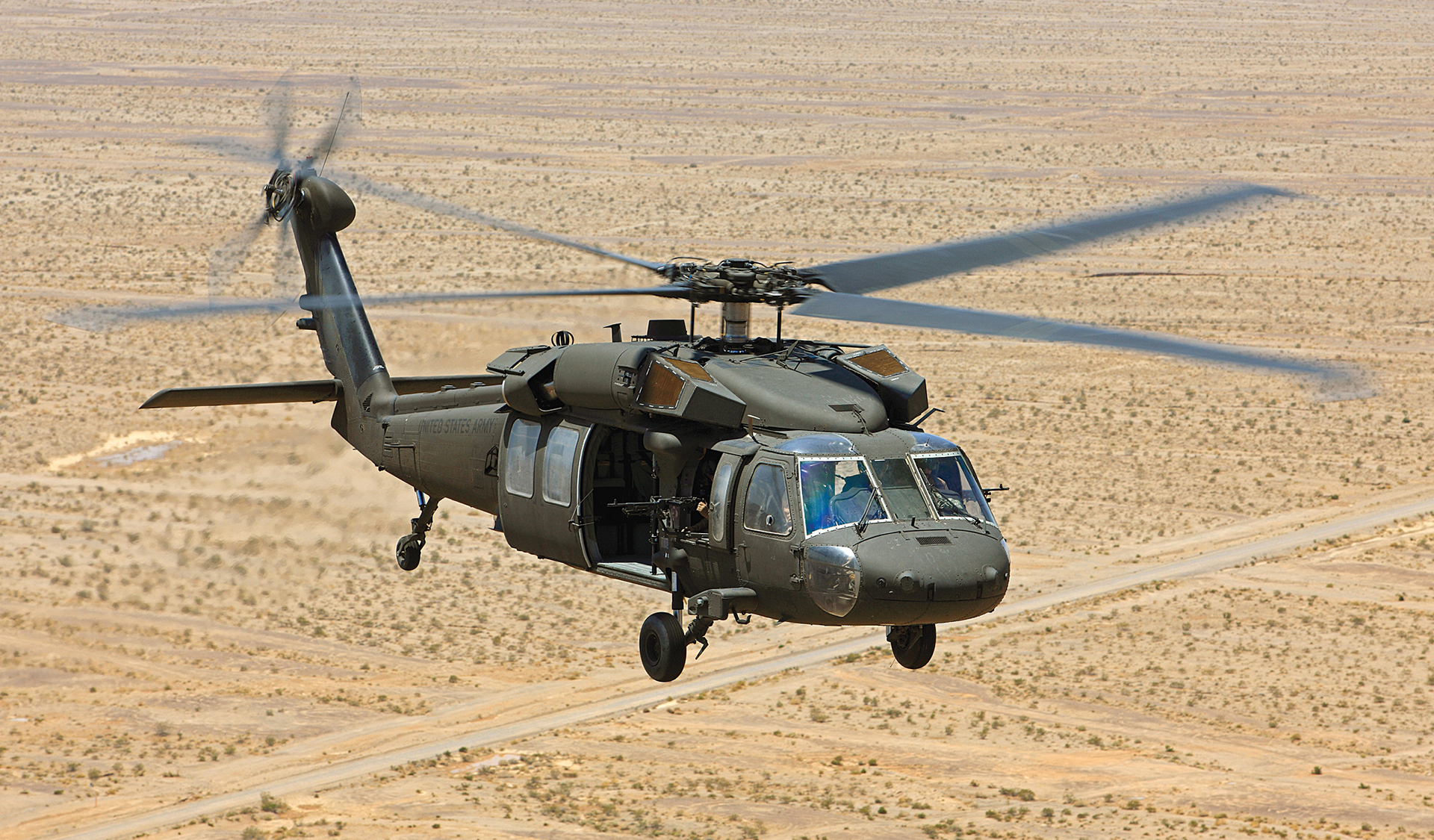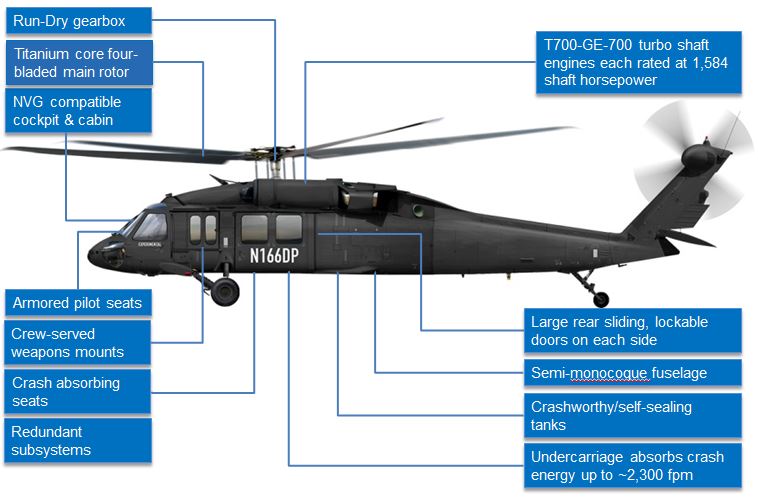UH 60 Helicopter Maintenance: A Comprehensive Guide for Pilots
UH 60 Helicopter Maintenance: A Comprehensive Guide for Pilots
Blog Article
Recognizing the Mechanics and Design Behind Uh 60 Helicopters
The UH-60 helicopter, frequently recognized as the Black Hawk, stands as a pinnacle of modern-day rotorcraft modern technology, personifying a mix of durable engineering and detailed technicians. As we peel off back the layers of the UH-60's layout, a globe of intricate systems and precise engineering comes to light.
Background of UH-60 Helicopters
The history of UH-60 helicopters traces back to the late 1970s when the United States Military looked for a sophisticated and flexible energy helicopter to change its aging fleet. In feedback to this demand, the Sikorsky Aircraft Company created the UH-60 Black Hawk helicopter. Presented in 1979, the UH-60 quickly became a staple in military operations as a result of its outstanding capacities.
The UH-60 was made to master a variety of goals, including troop transport, clinical discharge, digital warfare, and special procedures. Its capability to adapt to different roles made it an important possession to the U.S. uh 60. Military and other military pressures worldwide
Throughout the years, the UH-60 platform has actually undergone a number of upgrades and variants to enhance its performance and keep rate with progressing objective demands. These helicopters have seen extensive solution in problems such as the Gulf War, Afghanistan, and Iraq, showcasing their reliability and adaptability in varied operational atmospheres. The UH-60's abundant background is a testimony to its long-lasting tradition as a premier utility helicopter.

Engine and Power Systems
Utilizing sophisticated propulsion modern technology, UH-60 helicopters are furnished with innovative engine and power systems to make certain ideal performance and integrity in a range of functional situations. The UH-60, generally called the Black Hawk, is powered by two General Electric T700-GE-701D engines, each capable of providing up to 1,940 shaft horse power. These turboshaft engines provide the necessary thrust for the helicopter to bring out its goals effectively, consisting of army transportation, medical evacuation, and fight assistance.

Blades System and The Rules Of Aerodynamics
Just how do the blades system and the rules of aerodynamics of UH-60 helicopters contribute to their functional effectiveness and flight capacities? The rotor system of the UH-60 helicopter plays a vital role in supplying lift and propulsion.
The rules of aerodynamics additionally play a key duty in the efficiency of UH-60 helicopters. The streamlined fuselage and rotor blade layout lower drag, enabling the helicopter to accomplish higher speeds and better fuel efficiency. The wind resistant style of the UH-60 also adds to its ability to operate in diverse environmental conditions, consisting of hot temperature levels and high elevations.
Avionics and Trip Control Equipment

In its detailed coordination with the blades system and aerodynamics of UH-60 helicopters, the avionics and trip control systems develop an essential network of modern technologies shaping the aircraft's operational capacities. Avionics incorporate the electronic systems made use of for interaction, navigation, and keeping an eye on different aircraft functions. In the UH-60, these systems consist of electronic displays, communication radios, general practitioner navigation, weather radar, and auto-pilot systems. These avionics systems supply important info to the pilots, enhancing situational visit homepage recognition and ensuring safe and reliable procedure of the helicopter.
The flight control systems of the UH-60 are in charge of translating the pilot's inputs right into the appropriate adjustments to the blades system, making certain secure trip and maneuverability. These systems consist of hydraulic actuators, servos, and computer systems that collaborate to manage the tail and major blades, along with various other trip control surfaces. By specifically taking care of the helicopter's flight characteristics, these systems allow pilots to do a large array of missions, from transport and search-and-rescue to fight procedures, with precision and confidence.
Duty and Applications in Aeronautics
The duty and applications of avionics and trip control systems in aviation are indispensable to ensuring the effective and secure operation of aircraft, consisting of UH-60 helicopters. Avionics systems in UH-60 helicopters encompass an array of digital systems that help in navigating, interaction, tracking, and managing different aircraft features. These systems include digital display screens, auto-pilot systems, communication radios, general practitioner navigating equipment, and climate radar. Flight control systems play a critical duty in navigating the helicopter in the air, keeping stability, and ensuring accurate activities. The fly-by-wire modern technology used in modern UH-60 helicopters converts pilot inputs into digital signals, which are after that interpreted by the flight control computer systems to change the airplane's control surface areas. Furthermore, these systems include security functions such as auto-pilot settings, terrain recognition advising systems, and security augmentation systems to enhance the general security and functional abilities of the UH-60 helicopters in different objectives, including troop transport, clinical emptying, search and rescue, and airborne firefighting.
Conclusion
Finally, the UH-60 helicopter is Continued a functional aircraft with a rich background and advanced engineering. Its engine and power systems, rotor system, aerodynamics, avionics, and trip control systems all function together to make it a reputable and efficient maker. The UH-60's function and applications in aviation are substantial, ranging from armed forces procedures to look and save objectives. Its continued development and use demonstrate its relevance in the field of air travel (uh 60).
In its detailed sychronisation with the blades system and the rules of aerodynamics of UH-60 helicopters, the avionics and flight control systems create a critical network of innovations forming the aircraft's functional abilities.The trip control systems of the UH-60 are liable for converting the pilot's inputs right into the ideal changes to the blades system, making sure steady trip and maneuverability. Avionics systems in UH-60 helicopters incorporate a range of digital systems that aid in navigating, interaction, tracking, and regulating numerous aircraft features. Additionally, these systems integrate safety functions such as auto-pilot modes, surface recognition alerting systems, and security augmentation systems to improve the total security and operational abilities my response of the UH-60 helicopters in various objectives, including army transport, medical discharge, search and rescue, and airborne firefighting.
Its engine and power systems, rotor system, the rules of aerodynamics, avionics, and flight control systems all work together to make it a reputable and reliable device.
Report this page